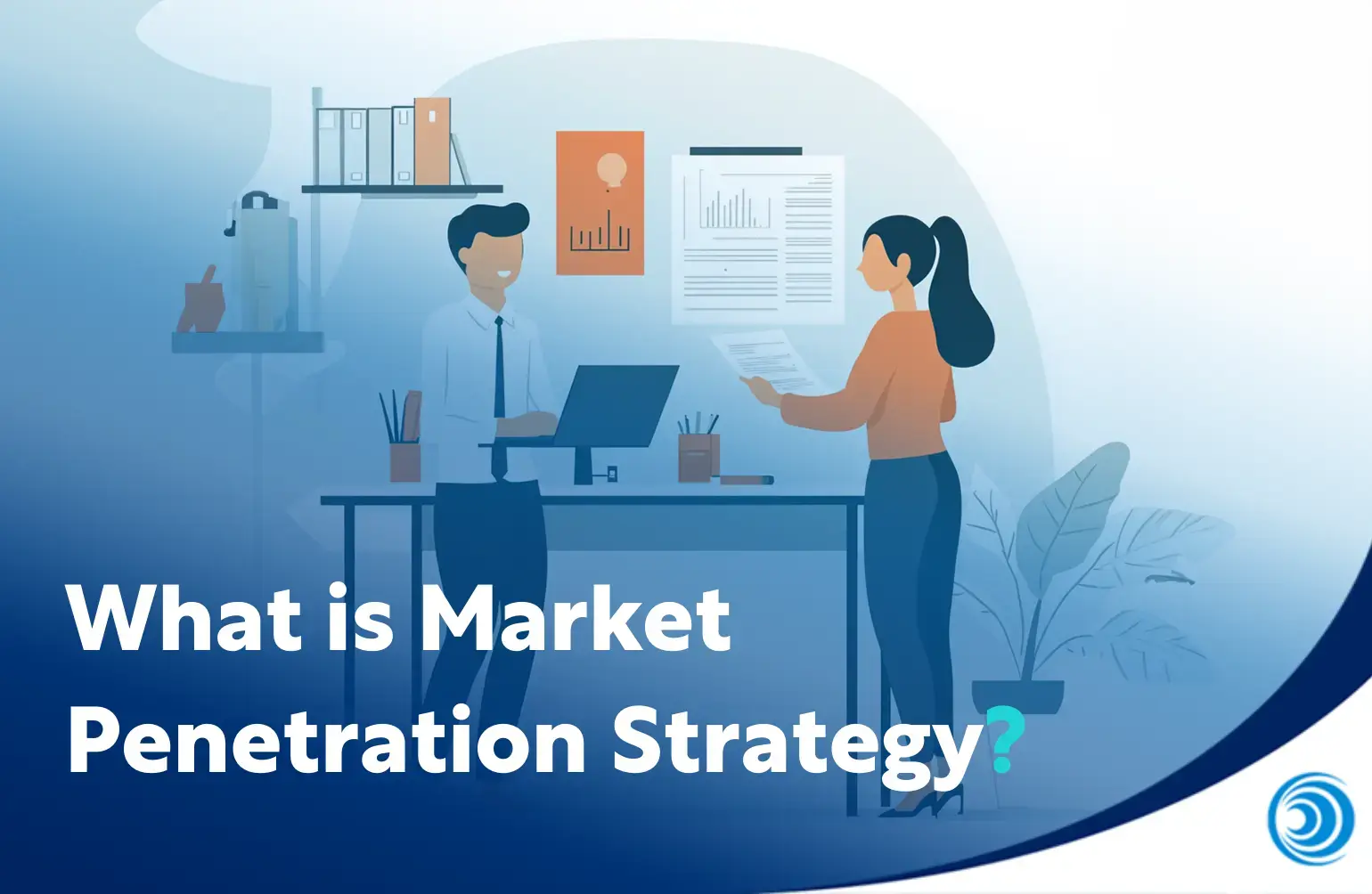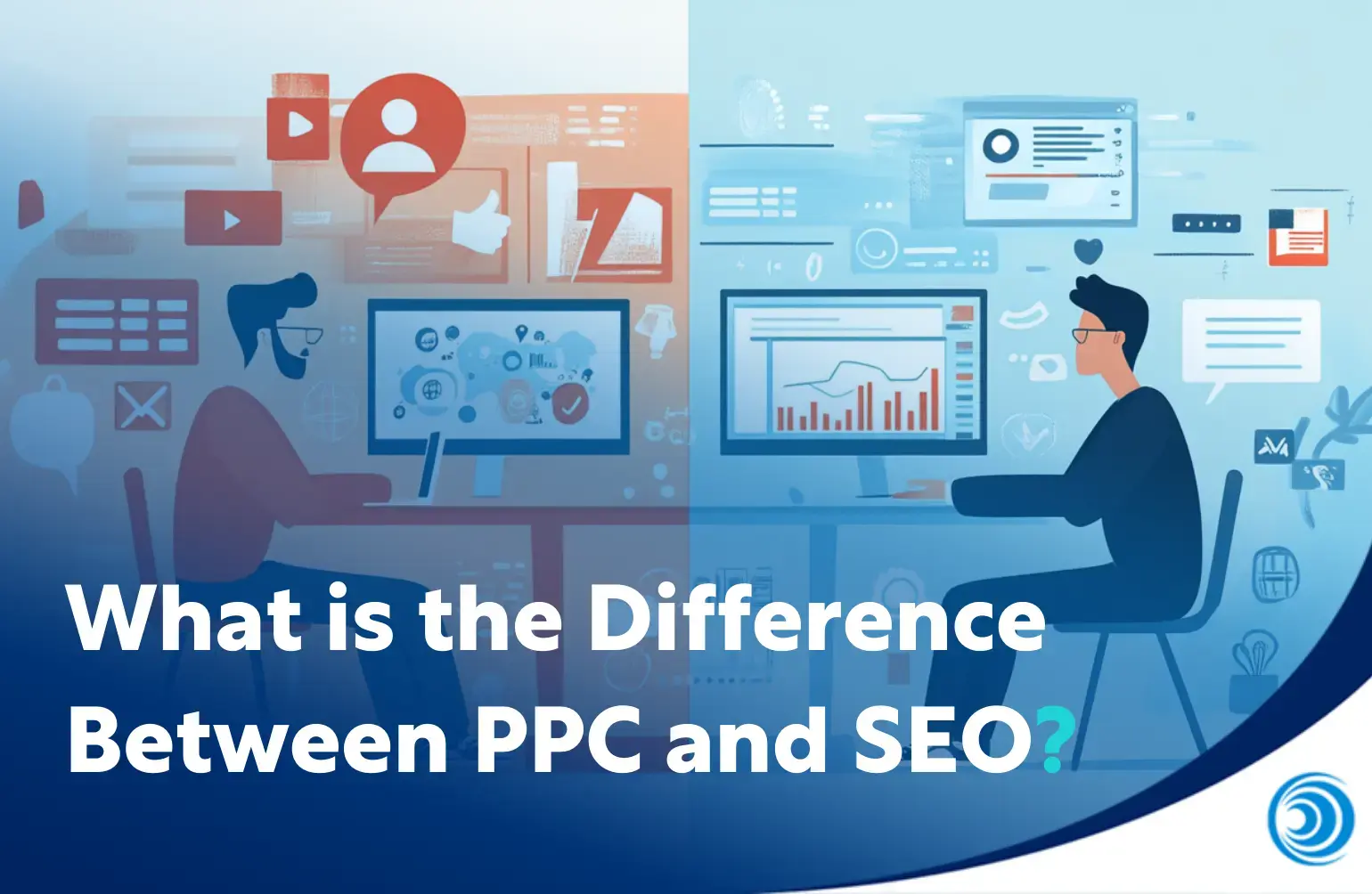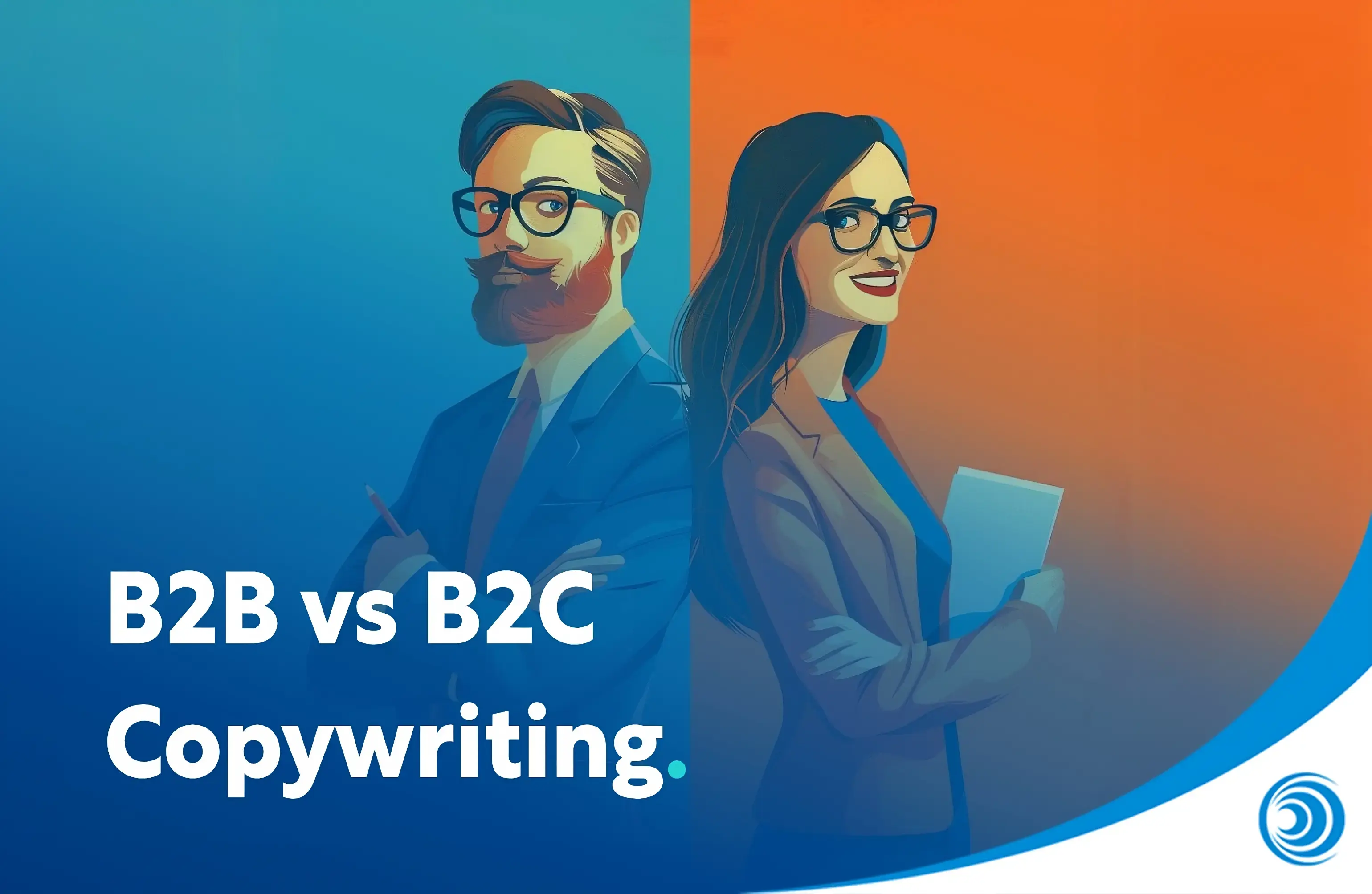
B2B vs B2C Copywriting
The copywriting landscape is diverse, encompassing everything from digital copy to print articles—each tailored to specific marketing objectives.
Understanding the nuances of B2B vs B2C copywriting is essential for crafting proficient written content.
B2C copywriting aims to emotionally connect with an individual consumer. Whilst utilising relatable language and a conversational tone to drive engagement.
In contrast, B2B copywriting targets a business audience. It focuses on delivering detail-oriented, fact-based content that highlights the core benefits of investing in the product/service.
This article explores the distinctive approaches and techniques used in B2B and B2C copywriting, offering insights into how writers can effectively communicate with each audience.
What is copywriting?
Copywriting is written pieces of content used for marketing purposes.
It aims to convince individual buyers to take a specific action. This action could be a customer making a purchasing decision or a business owner signing a contract.
There are varying types of copywriting, each with its own merits. The set marketing goals determine which form will be used. Ranging from B2B and B2C copywriting to social media and ad copywriting.
The history of copywriting
Copywriting is a methodology that can be traced all the way back to the 15th century.
Fast-forward over 500 years, the world is far more evolved and digitised. Copywriting strategies have evolved, shifting online as consumers become more 'tech savvy'.
As of 2024, 4.95 billion people worldwide use social media, spending an average of 2 hours and 24 minutes on platforms per day.
Consumers' daily time on social media allows marketers to target audiences directly through social media copy.
Modern copywriting is wider than just social media content. It also includes the likes of thought leadership and SEO blogs, as well as copy on landing pages.
Business-to-consumer (B2C) copywriting
B2C copywriting is copy that is directed to the individual consumer.
Customers are human beings and crave emotional connection in all aspects of life. They should not just be seen as commodities to make a profit.
According to recent market research conducted by Forbes, 68% of Gen Z and Millennial consumers see the products they buy as a reflection of their personality, values, and beliefs.
A B2C copywriter's primary focus should be to provoke an emotive response from their target audience. The key to well-written customer-centric copy is knowing the customer personally—their needs and pain points.
Writing in a conversational tone is a great example of how to build a rapport...
Techniques such as anecdotes or humour can make a big difference in the customer experience. Pulling on their heartstrings and creating a sense of relatability constructs the illusion that the writer is speaking directly to the consumer.
Creating content that is easy to understand is equally as important...
Using simple writing structures, like short paragraphs or bullet points, makes bodies of text easier to digest. Avoid jargon; speaking to the 'everyday person' is the sign of a skilled writer.
Consumers love a company that they can resonate with. Adding human elements to relevant marketing copy helps a brand demonstrate its core messaging.
Example of B2C copywriting
Spotify, the music conglomerate, uses its web copy to showcase the streaming service's benefits.
The site's headline when advertising Spotify Premium is 'All the music, without all the audio ads.'
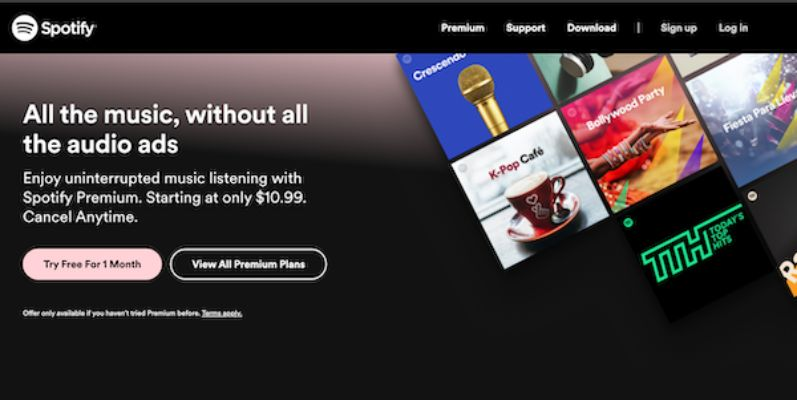
Within seconds, in one short sentence, they highlight the two main benefits of the company's product.
In just eight words, they concisely outline the two main benefits: unlimited music choices and no adverts.
After being enticed by the compelling copy, the reader is met with a clear call to action underneath: 'Try free for 1 month.'
The offer of a free trial is the 'nail on the head' when it comes to influencing the buyer's decision-making process.
Allowing them to try the product before they buy generates trust between the business and the consumer. Providing the customer with a choice and not forcing the buyer's journey on them.
Business-to-business (B2B) copywriting
B2B copywriting is copy that informs other businesses about a product/service.
This type of written content is typically presented in the form of white papers, case studies, and blogs.
Writing directly to professional entities requires strategic thinking. The copy must appeal to a whole business rather than a single consumer.
The content needs to be informative and data-driven. It must be able to sell to a large group of people, and the solutions must provide value for the entire company. Writers must stick to purely factual copy.
B2B copywriting encompasses more than just writing copy. Marketing directly to other organisations can be complex; the topic of choice must be well-researched.
Establish the business as a thought leader within the industry. This can be achieved by displaying the customer's USPs and how you can help attain their business goals.
This all has a great influence on the buying decision.
Example of B2B copywriting
Nuvei is a Canadian credit card offering businesses cutting-edge financial services.
Not long ago, they began blurring the lines between traditional B2B and B2C copywriting when promoting their products.
While still maintaining professionalism, Nuvei uses fresh tactics to generate interest.
A recent campaign features Hollywood Actor Ryan Reynolds, who is known for his R-rated humour and quick wit on screen.
Reynolds quotes, 'American tech companies have been getting all the attention. It's Canada's time.' A series of comical videos followed the quote - enticing paying customers in a new way.
The partnership makes the company appear more personable, bringing a sense of humanity to the brand.
It shows that Nuvei has personality and isn't just another boring payments company.
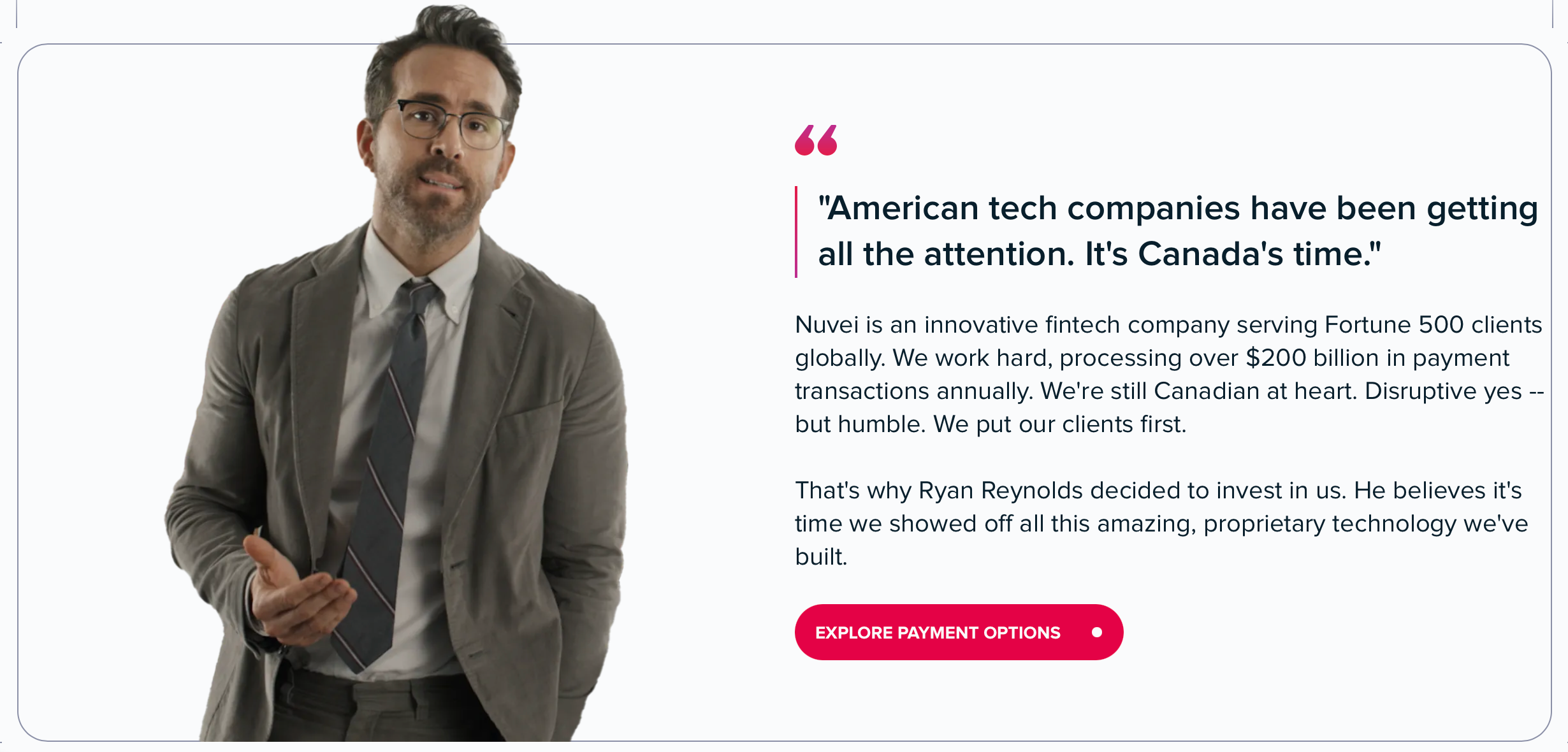
The difference between copywriting and content writing
Copywriting is a type of persuasive writing. It promotes a product/service to a desired audience to achieve a positive action.
Content writing, on the other hand, involves creating educational or entertaining content about a product/service. Examples of content writing include eBooks, podcasts, and video scripts.
Content writing is part of an overall long-term strategy. Its goal is to establish trust with an audience through education in a longer sales cycle.
Conversely, copywriting is a short-term strategy that aims to trigger an immediate reaction from potential leads.
The writing styles tend to differ between the two. Generally speaking, content writing uses clear, simple sentences. Compared to copywriting, which allows more creative license for sophisticated language.
Both are forms of engaging content...
Copywriting pieces are short, designed for immediate action, and have a brief lifespan. Content writing requires deeper research and understanding to create meaningful work.
Similarities between B2B and B2C copywriting
Skilful writers should be able to write content for any audience. Writing copy for B2B and B2C audiences does have some distinct overlaps.

Be memorable
It is essential that both types of copywriting stand out from the crowd. Be memorable.
Whilst each takes a slightly different approach, both B2B and B2C copy must highlight their unique aspects.
Copywriting must be benefit-oriented, guiding individuals or businesses down the sales funnel, not just providing information.
Make the purchase decision easier by clearly stating the benefits to the customer.
Conversions
The overarching goal of any type of copy is to get the reader to complete a desired action.
For B2B, this could mean demonstrating ROI (return-on-investment) for small companies partnering with the business.
For B2C, it could be a customer signing up for a subscription.
Building trust is crucial for B2B and B2C sales. Copywriters establish credibility via evidence, case studies and other social strategies. This improves first-time investment and the repeatability of potential customers.
Both types of copywriting aim to generate leads and drive conversions, regardless of what's being sold. At heart, it's all the same - driving an action
Differences between B2B and B2C copywriting

The main differences between B2B and B2C copywriting are more than just the target audience.
Key differences include...
Audience
Both B2B and B2C copywriters need to understand their target audience... each audience is very different.
B2B copy needs to appeal to professionals, stakeholders, and key business decision-makers. These individuals require 'just the facts' to be convinced to invest. As the buying process often involves multiple individuals.
Multiple intricate resources build credibility for a product/service. While catering to audiences engaged in lengthy sales processes.
B2C appeals to the individual or a small group.
Consumer sales are more impulsive, as the purchases are driven by personal gain. One resource can be enough to make that impact. More often than not, the customer wants a quick and gratifying investment.
Depending on whether a writer is trying to target a B2B or B2C audience, the copy should be shared on different social media platforms.
In B2C niches, Facebook is the most popular social media platform, at 50%. Whereas for B2B, LinkedIn is the most popular at 40%.
Tone of voice
B2B copywriting focuses primarily on logic. The tone is rational, factual, and more complex.
Detailed information helps decision-makers see how investing in the product/service solves their business challenges.
A single advertisement will not sell businesses. Create content that promotes increased efficiency, productivity, and reduced costs. Emotional appeal has less value.
B2C copywriting uses emotion to engage consumers. It aims to connect their desires with the offering through a relaxed and emotive approach.
Emphasis should be placed on immediate benefits. Consumers are known to have less focus, with attention spans shrinking to just 8% in 2024.
Content should be simple and straightforward, captivating attention for a short window of time.
Conclusion
Mastering the distinct techniques of B2B and B2C copywriting is indispensable for marketers... who want to engage with their respective audiences most effectively.
Understanding these distinctions can significantly impact campaign success. Whether aiming to evoke emotion from a customer or present data to a senior leadership team.
Choosing the right tone, style, and strategy helps writers create compelling content that resonates with the audience. Thus promoting the desired actions and achieving the set marketing objectives.
As marketing continues to evolve and change, the ability to adeptly navigate the difference between B2B and B2C copywriting is an invaluable skill in a marketer's toolkit.


